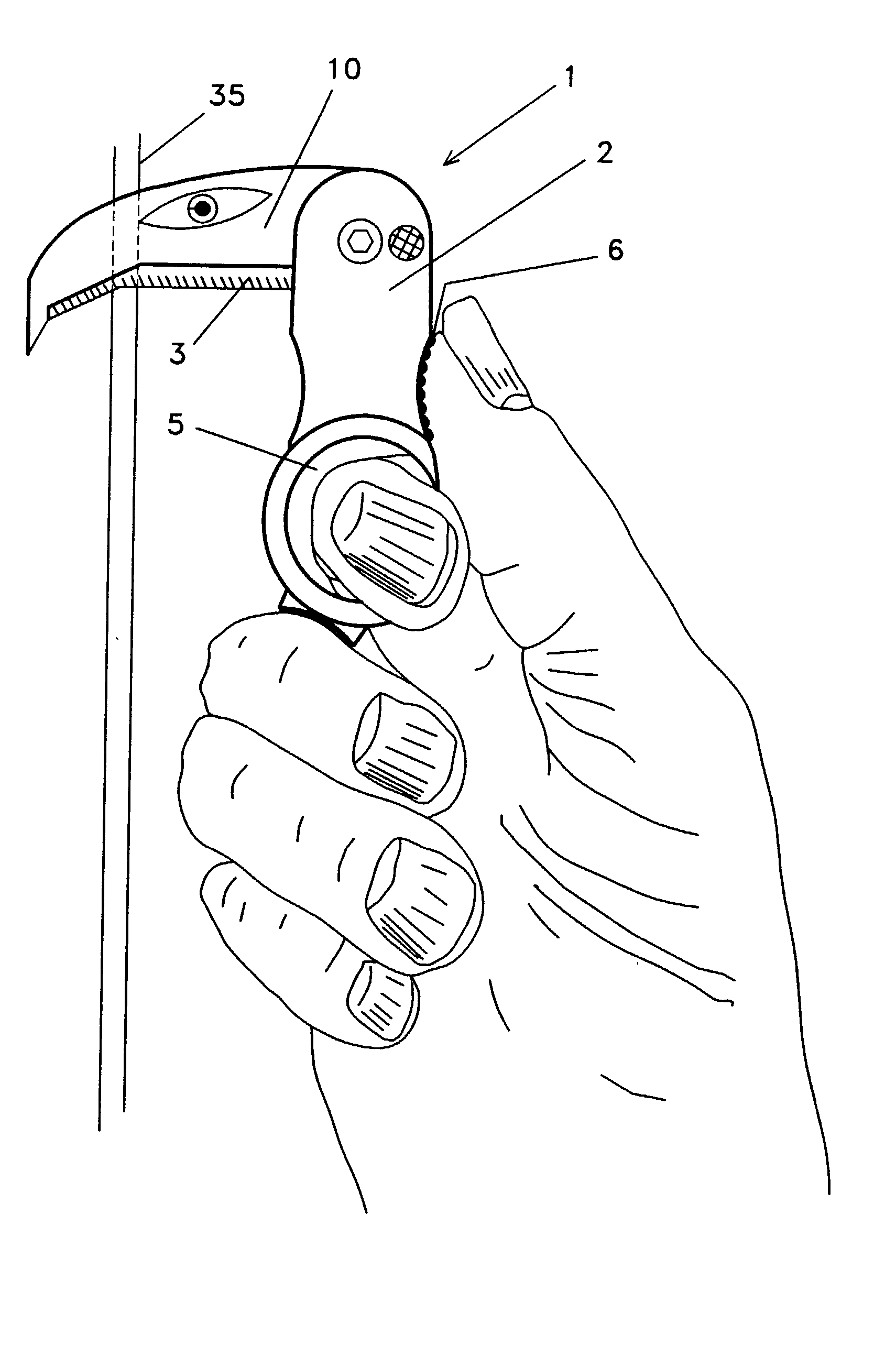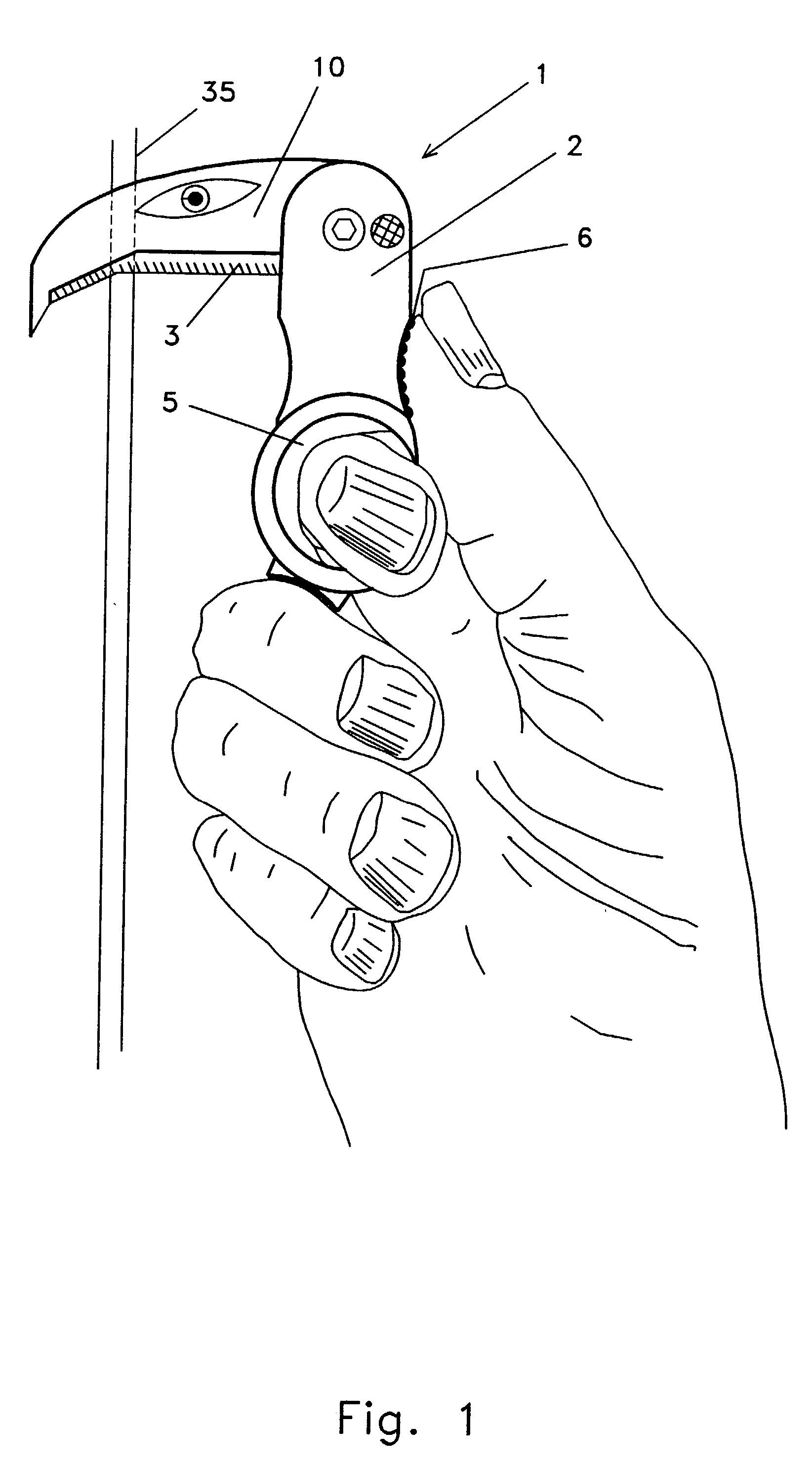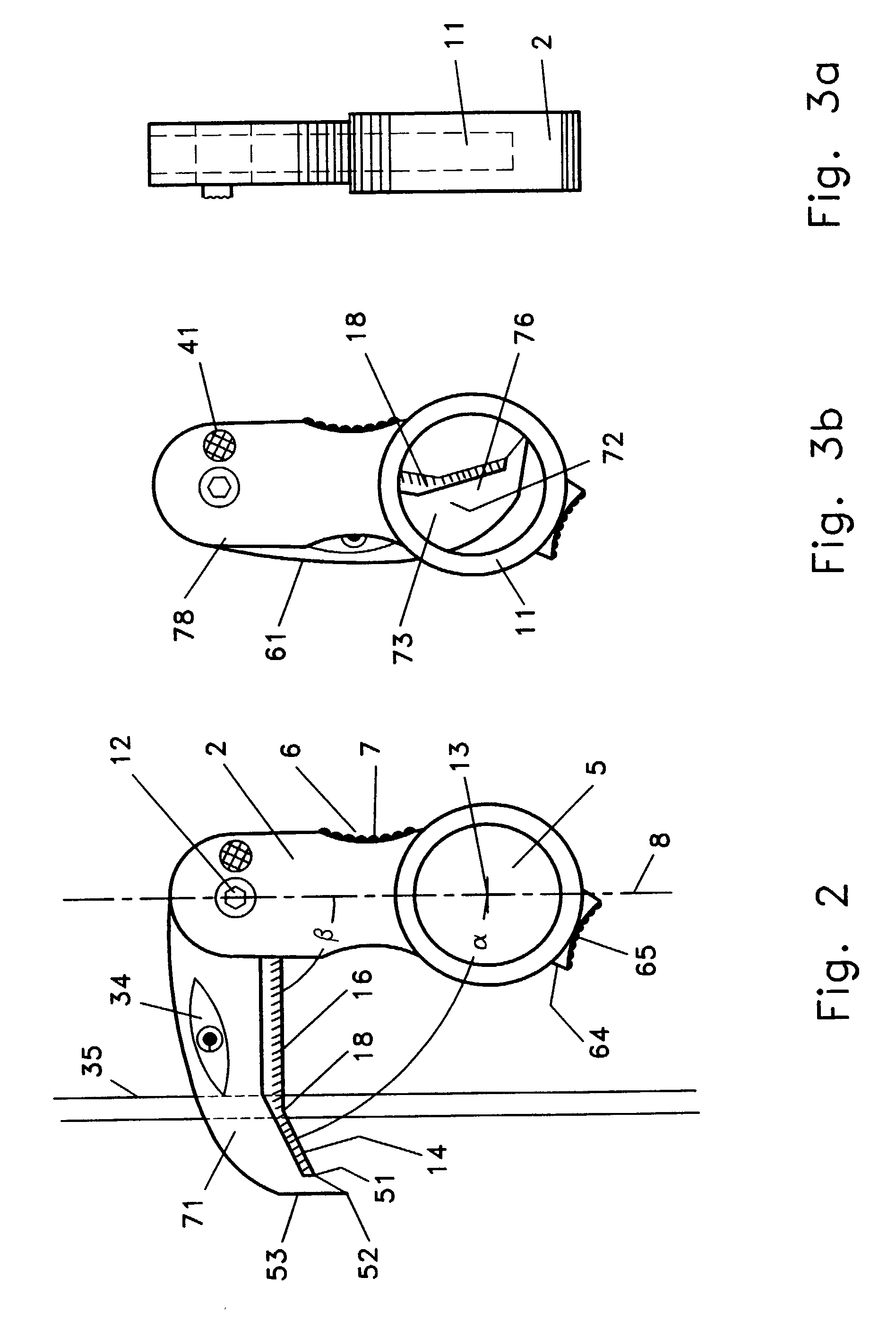Folding precision taxidermy cutting system
a taxidermy cutting system and folding technology, applied in the field of taxidermy cutting instruments, can solve the problems of uneven cutting, inconvenient cutting, and inability to accurately and clean incisions,
- Summary
- Abstract
- Description
- Claims
- Application Information
AI Technical Summary
Benefits of technology
Problems solved by technology
Method used
Image
Examples
Embodiment Construction
[0029] As can be easily understood, the basic concepts of the present invention may be embodied in a variety of ways. It involves both taxidermy techniques as well as instruments to accomplish the task. In this application, the techniques are disclosed as part of the results shown to be achieved by the various instruments described and as steps which are inherent to utilization. They are simply the natural result of utilizing the instrument as intended and described. In addition, while some device designs are disclosed, it should be understood that these not only accomplish certain methods, but also can be varied in a number of ways. Importantly, as to all of the foregoing, all of these facets should be understood to be encompassed by this disclosure.
[0030] The basic concepts of the present invention may be embodied in many different ways. FIG. 1 shows a device or cutting system according to the present invention as it is designed to be used and held. This side view shows how the cu...
PUM
 Login to View More
Login to View More Abstract
Description
Claims
Application Information
 Login to View More
Login to View More - R&D
- Intellectual Property
- Life Sciences
- Materials
- Tech Scout
- Unparalleled Data Quality
- Higher Quality Content
- 60% Fewer Hallucinations
Browse by: Latest US Patents, China's latest patents, Technical Efficacy Thesaurus, Application Domain, Technology Topic, Popular Technical Reports.
© 2025 PatSnap. All rights reserved.Legal|Privacy policy|Modern Slavery Act Transparency Statement|Sitemap|About US| Contact US: help@patsnap.com



